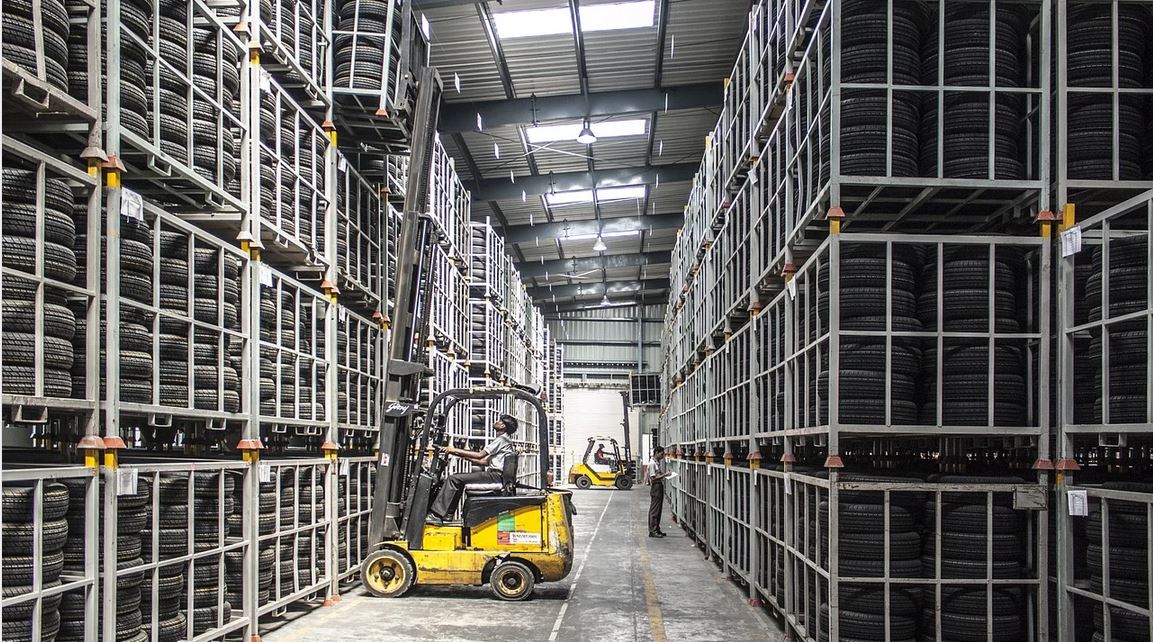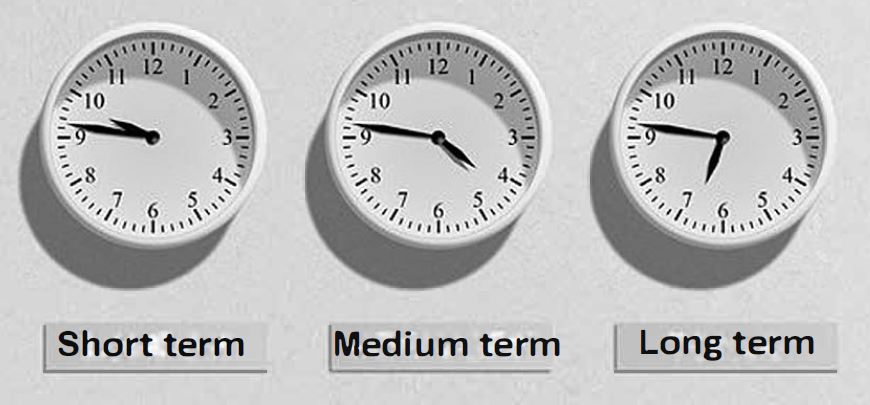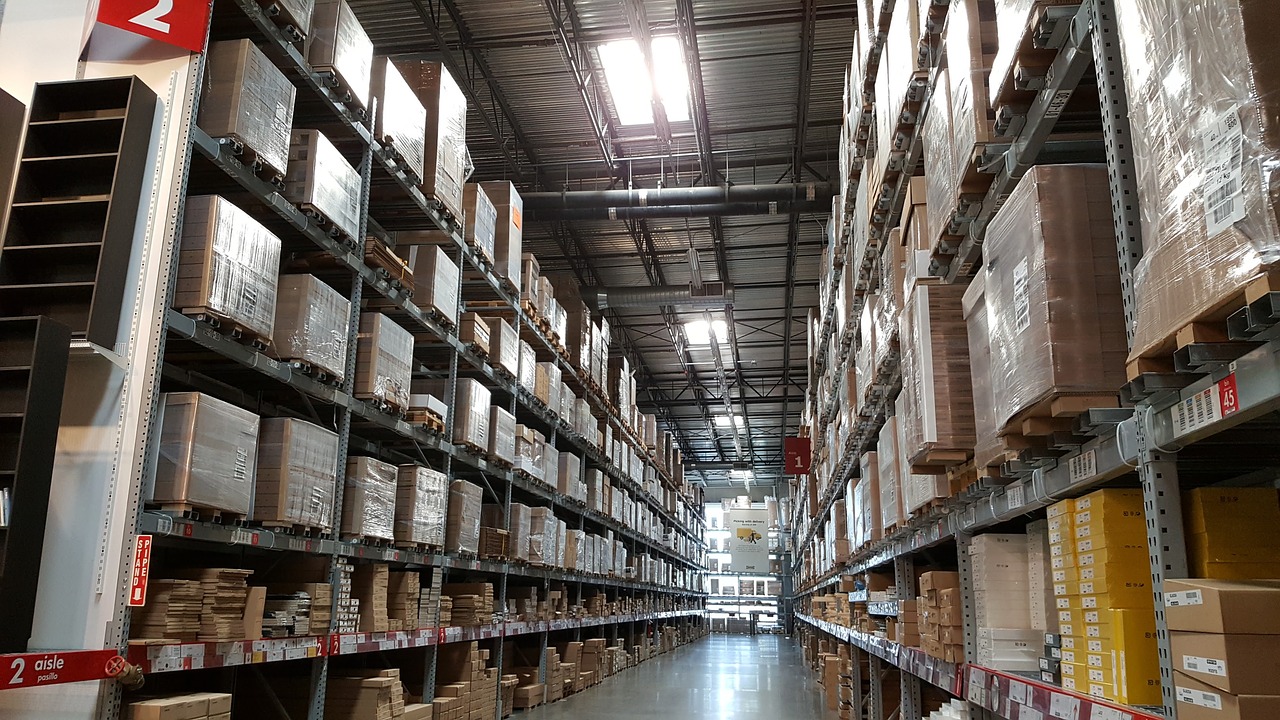The difference between JIT & JIC
The difference between JIT and just-in-case (JIC) (AO3)

This section of the IB Business Management syllabus looks at the main differences between just-in-time (JIT) and just-in-case (JIC) methods of stock control (AO3).
Note to teachers:
Whilst this same topic was part of the previous syllabus (final exams N23), note the specifications stated that "the difference between JIT and just-in-case (JIC) was taught to AO2 only. In the new guide, this has been elevated to AO3.

Just-in-time (JIT) is a lean method of stock control which relies on deliveries of stock (inventory) being made just in time for them to be used in the production process. JIT removes the costs of holding buffer stocks (minimum stock levels). Hence, this eliminates the need for storage and the costs of insurance and maintenance that are associated with holding large volumes of inventory. It is part of a continuous improvement programme, although it often becomes more difficult to manage as an organization grows in size.
Just-in-time stock control systems have stocks delivered immediately the moment that they are required for production. This helps to improve the firm’s working capital as money is not tied up in inventory, which might not be highly liquid. Conversely, there are costs associated with any stock control system such as just-in-case (JIC). The costs of holding stock (inventory) include but are not limited to the following:
Storage
Damage
Maintenance
Insurance
Wastage
Security (theft prevention)
Advantages of JIT stock control
The advantages of using just-in-time as part of a firm's production planning include the following points:
The system eliminates the need for buffer stocks, so minimizes storage costs as stocks are delivered as and when required in the production process.
Wastage is thus required as inventory does not perish, get damaged or become obsolete while waiting to be used. Hence, JIT is a form of lean production.
The firm’s liquidity position improves, as cash is not tied up in inventory, improving cash flow position.
Overall, JIT can help to improve an organization’s competitiveness due to lower costs of stock management and improved product quality.
Disadvantages of JIT stock control
The disadvantages of using just-in-time as part of a firm's production planning include the following points:
Due to smaller order quantities, economies of scale are less likely to be achieve.
The system relies heavily on technology to ensure efficient stock control and movement, but this can be very expensive and vulnerable to technical faults and breakdowns.
The effectiveness of JIT depends on the efficiency and reliability of third-party suppliers.
JIT stock management is inflexible in catering for sudden increases in demand. There is the inability to meet unexpected changes in demand.

JIT relies on reliable suppliers to deliver stocks on time

Unlike JIT, a just-in-case (JIC) stock control system relies on the use of reserve or buffer stocks in order to meet changing levels of demand. By keeping large quantities of stock, the firm is able to meet unexpected orders quickly, thus meeting the needs of their customers. It also enables the firm to continue operating even if there are delays in the delivery of stock (inventory). By contrast, not having enough stock would result in lost sales and unhappy customers.
JIC is appropriate for firms that use durable, rather than perishable, stocks. It is suitable across many industries. Examples include: power tools, batteries, torches, nails, pens, greeting cards, Lego toys, and toothpicks. It is less suitable for perishable stocks, such as eggs, fresh fruits and vegetables, fresh seafood, and milk. It is also unsuitable in industries where fashions and trends change frequently.
Essentially, the key difference between JIT and JIC as stock control systems is that the former relies on operations that receive inventory as and when they are needed for production, whereas the latter relies on sufficient quantities of stocks (inventories) to ready ahead of time. See table 1 below for a list of the differences between JIT and JIC.

JIC is not suitable for the ever-changing fashion industry
Advantages of JIC stock control
Advantages of using a just-in-case (JIC) stock control system include the following points:
A JIC stock control system uses buffer stocks so is flexible enough to accommodate any sudden and unexpected increase in the demand for a product.
As a reserve or buffer stock exists, production can still continue even if suppliers deliver stocks late.
As larger quantities of stock are purchased, bulk-buying economies of scale can also be achieved to a greater extent compared to a JIT system.
It prevents a loss of customers and maintains customer satisfaction because their needs are being met (since firms don’t have to wait for stocks to arrive in order to complete production).
Disadvantages of JIC stock control
Disadvantages of using a just-in-case (JIC) stock control system include the following points:
There are costs associated with JIC, which include insurance and maintenance (including security) of stocks.
Stocks are also subject to damage or theft.
Stockpiling (holding large volumes of stock) can harm the firm’s cash flow and working capital, especially if the stocks are not highly liquid.
Suppliers can charge higher prices for urgent deliveries of stocks.
JIC is unsuitable for stock management of perishable products such as fresh produce (fruits and vegetables) and livestock products, such as beef, pork and poultry (game) products.
Table 1 - The main differences between JIC and JIT
| Just in time (JIT) | Just in case (JIC) |
| Does not rely on the use of buffer stocks | Relies on the use of buffer stocks (inventories) |
| Lean approach to stock control | Traditional approach to stock control |
| Inflexibility to meet unexpected changes in demand | Flexibility to meet customers’ needs |
| Limited opportunities to gain from economies of scale | Can buy in bulk (purchasing economies of scale) |
| Vulnerable to stock-outs and production downtime | Can avoid stock-outs and production downtime |
| Incentive to achieve zero defects | No incentive to achieve zero defects |
| No waste | Potential for high wastage rate |
Video documentary - What retailers like Amazon do with unsold inventory
Every year, Amazon and other retailers end up with surplus inventories that are unsold or unwanted (returned items from their customers, such as clothing, toys, and DVDs). Most of these items go straight to landfills or are incinerated. The problem is only growing as Amazon leads the way in bringing more customers online, where the rate of returns is 25%, compared to just 9% for in-store purchases. Watch this documentary to find out more about the growing problem of excess inventory and the strive to cut back on the wasted inventory clogging our landfills and our planet.
Students should answer the accompanying questions as they watch the video.
Questions
How many pounds of waste does excess inventory make a year in the US?
How many clothes are unsold according to a recent study in Germany?
Why do so many items end up in landfills?
Which products are unable to be resold and/or have no resell value?
What was Amazon’s programme called in response to reducing excessive waste?
Which product has the largest problem in terms of customer returns and waste?
What type of organization is World Vision?
What is Amazon’s second hand/used programme called, which sells renewed goods at a discounted rate?
Why is there such a high rate of return (up to 100%) on clothing items bought online?
What does MTAILOR’s app specialise in?
What does "Rent the Runway" do?
How much wasted inventory has Stericycle disposed of or recycled for larger companies?
Answers (timings are included for reference only)
How many pounds of waste does excess inventory make a year in the US? 0:12
5 billion pounds (2.27 billion kgs) and 15 million metric tonnes of carbon dioxideHow many clothes are unsold according to a recent study in Germany? 0:28
10% - 20%, 230 million itemsWhy do so many items end up in landfills? 1:57
It is too expensive to re-sell or to recycle, so it is more economical to destroy the items in bulkWhich products are unable to be resold and/or have no resell value? 2:32
Opened over-the counter medicines, and DVD videosWhat is Amazon’s programme called in response to reducing excessive waste? 3:26
Fulfilled by Amazon DonationsWhich product has the largest problem in terms of customer returns and waste? 4:29
Apparrel (clothing) with 30% of items not being sold, partly due to high-fashion ("50-season fashion yea, with new clothes coming out every week")What type of organization is World Vision? 6:26
Non-profit organization that helps retailers to donate their excess inventory to different countries across the worldWhat is Amazon’s second hand/used programme called, which sells renewed goods at a discounted rate? 7:34
Amazon WarehouseWhy is there such a high rate of return (up to 100%) on clothing items bought online? 8:55
Customers buy 2 or 3 of the same items and only keep the one that fits best, thereby returning the others; 65% - 70% of what customers return is due to fit and/or style-related reasonsWhat does MTAILOR’s app specialise in? 10:03
Custom clothing fit app (to help reduce returns and waste)What does "Rent the Runway" do? 10:25
Reduces apparrel waste by renting out clothing items (H&M also offer a similar service)How much wasted inventory has Stericycle disposed of or recycled for larger companies? 11:31
80 million pounds (around 36.3 million kgs).
Just-in-case (JIC) is a stock control system that relies on the use of reserve stocks (or buffer stocks) in order to meet changing levels of customer demand.
Just-in-time (JIT) is a lean stock control system which relies on deliveries of stock or inventory being made as and only when they are needed in the production process.
Lean production is a philosophy or organizational culture about streamlining production processes in order to increase efficiency and reduce waste.
Waste refers to any source of operational inefficieny in an organization.
Return to the Unit 5.6 - Production planning (HL only) homepage
Return to the Unit 5 - Operations management homepage
 IB Docs (2) Team
IB Docs (2) Team
